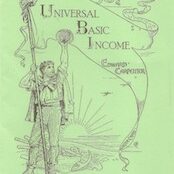Gypsies have become the object of increasingly racist, anti-immigration demonology over the last few years. As MATTHEW BROWN reports, they have been the one of the most victimised groups in society for centuries.
It could be any day in modern London. A tube pulls into King’s Cross underground station. The doors slide open and a young woman wearing a headscarfe, long skirt and woollen shawl struggles on board with a baby-shaped bundle strapped to her back in a cloth sling. A small boy sporting a tightly-plaited pig tail stumbles after her, followed by a young man with dark hair and olive coloured skin who drags a large plastic launderette bag on to the train, heaving it through the legs of London’s commuters.
Feet shuffle and newspapers rustle as the young family search desperately to catch someone’s eye. “Please, please!” whispers the woman to a middle aged man seated opposite her. But his eyes are suddenly fixed on the adverts above her head. Others gaze at the floor, or stare intently at their own reflections in the dark windows behind her.
Then the little boy hops up, plants himself in front of a beige suited woman. “Please,” he says, pointing to the tube map above his head. “Wittorie? Wittoria?” “Oh, Victoria!” she exclaims, flushed but relieved that she’s not being asked to delve deep for some spare change. “It’s three stops,” she says, holding up her fingers, pointing to a name on the blue line. The boy sits down and a shy smile creeps across his young mother’s round face. “Thank you,” her eyes say.
Just another tricky episode for one of the UK’s newest families, feeling their way through the sea of suspicion…
Marcel Malik arrived in England from the Czech Republic in October 1997. Like the family on the tube he is a Gypsy – or Roma as they are more correctly known. He fled from eastern Europe to escape regular beatings from skinheads and the police, but so far England hasn’t exactly been the haven from persecution he had hoped for.
“Marcel was sent to Rochester prison for 45 days after he arrived and has been refused asylum three times,” explained his girlfriend Suzana Gyurkovics, a 17 year-old Slovakian Gypsy who came to England to escape hostility herself nearly four years ago with her mother and two sisters. “At school in Slovakia teachers wouldn’t speak to us because we were Roma,” she says. “My mother was harassed when she was pregnant and Roma women were beaten up. It’s better here but it’s still hard.”
Marcel was attacked in a restaurant once; both of them have been threatened in the street and forced to leave shops and clubs in Folkestone, the small seaside town where they have tried to remake their lives. According to the papers Marcel and Suzana are part of the “invasion” of illegal refugees arriving at Britain’s ports over the last few years “looking for a hand out”. Those who rode the wave that brought Marcel to Dover two and a half years ago were dubbed “giro Czechs” by the papers. But the “flood” turned out to be merely 600 people, half of whom left immediately.
Those who stayed were greeted with National Front marches and media scare stories, hostilities which intensified greatly in the following months as asylum seekers from Kosovo and Albania added to Britain’s so-called ‘immigration crisis’. On the south coast, when a few lucky families found places to live, signs went up in their new neighbours’ windows saying, “No asylum seekers welcome here”. One woman even put barbed wire around her garden fence when Gypsies moved in next door.
“Some of the things people came out with was incredible,” said Charles Bourne of Kent Refugee Link, an organisation which helps immigrants with their asylum appeals and welfare advice. “Even the kids were calling them perverted, dirty thieves, scroungers, baby snatchers – all the worst prejudices about Gypsies.”
Meanwhile, in London and other cities, east European Gypsies have become the new scroungers, labelled so by press and politicians – they exploit their children for begging, we’re told, they are fraudsters, aggressive, a menace on the streets. For the family on the tube it all seems a sorry tale, a tale of our times. But for them and their Roma ancestors it’s only the latest chapter in a long, long story of persecution and discrimination.
Origins
It started over one thousand years ago on the Indian subcontinent, where the origins of all Roma people are said to lie. No-one knows quite why they began to travel, but US Romany scholar Ian Hancock suggests they came from non-Aryan tribes who were recruited as troops by Hindus to repel the threat of Muslim invasion – partly because their lives were regarded as less valuable than those of India’s Aryan rulers.
Through their military endeavours they gradually travelled through Persia and the rest of what is now the middle east, into Turkey and beyond. This is known as the first great Romany migration. The second saw them spread into Europe, which they reached in the 14th century; and in the third, after Roma slavery had been abolished in the middle of the 19th century, Roma crossed the Atlantic to the Americas. Some say the exodus of Roma people from eastern Europe since the fall of the iron curtain constitutes a fourth great migration.
Through these endless wanderings, today’s estimated 12 million Roma are dispersed throughout most countries in Asia, the middle east, Europe, and north and south America. No-one knows for sure quite how many there are because Roma are often excluded from census records and many choose to hide their background for fear of discrimination.
It’s a well-founded fear. For, despite their 600-year presence in Europe, Roma remain the least integrated and most persecuted of peoples, having suffered centuries of slavery and state-sponsored pogroms. In the 15th and 16th centuries, for example, Roma were kept as slaves in the Balkans and Spain; in the 17th and 18th centuries they were shipped by Portuguese, Spanish and English merchants to become slaves in colonies in the Caribbean, Africa, north and south America, and even India; they were made slaves of the Russian Crown under Catherine the Great in the 18th century; and were later employed “in a state of slavery” in the coal mines of Scotland. In the 20th century, 1.5 million died at the hands of the Nazis – one of the least remembered aspects of the holocaust, or Porrajmos, as it is known in Romanes, the Roma language.
Anti-Gypsy hostility in the UK is nothing new either. Roma first arrived in Britain in 1500, travelling as tradesmen, craftsmen or entertainers. In 1530 Henry VIII made it a capital offence just to be an ‘Egyptian’, as they were known (see box below), in an Act that remained on the statute book for over 300 years. More than 100 were condemned to death in York in 1596, and 13 were hanged in Bury St Edmonds in 1650. Edward VI passed a law stating that Gypsies be “branded with a V on their breast, and then enslaved for two years”. Anyone who escaped was to be branded with an S and made a slave for life.
Marginalised
Now there are more than 100,000 Gypsies in the UK, about half of whom still live a nomadic lifestyle. And although the slavery and death sentences have gone, ‘No Travellers’ signs in pubs and shops are still seen; opposition to caravan sites from local residents, press and politicians is common; and daily harassment and intimidation continue to make Romanies one of the most vulnerable and marginalised ethnic minority groups in the country.
Rachel Morris of the Traveller Law Research Unit at Cardiff University claims that Gypsies have the highest infant mortality rates of any ethnic group, the lowest life expectancy, the most appalling accommodation provision, the highest illiteracy rates, and the most racist press coverage. “Romany culture appears to be so different from the rest of society,” she says. “We live in such a controlled society, and people see Travellers as outside the norm – they find it scary.”
In fact, Romany culture is extremely diverse. Although there are attributes common to all Roma, such as loyalty to extended family and the ‘clan’; belief in God (or Del), the Devil (or Beng) and predestiny; and attachment to a code of rules on cleanliness and purity (called Marim), the standards and norms vary enormously as different tribes have adapted to changing conditions and integrated to a greater or lesser degree with different gajikane (non-Roma) societies. Some Roma are still nomadic, but not all; some speak Romanes, but not all; and some Roma groups are illiterate, but not all.
Nevertheless, like other ethnic groups, Roma have suffered from ingrained stereotypes that have been built up over centuries. “Either they are seen as a wandering, mysterious and carefree people with pretty, painted wagons,” says Morris. “Or they’re dirty, noisy thieves and baby stealers with an alien language and customs, who never do an honest day’s work.” This “good gypsy – bad gypsy” syndrome derives from a dangerous mix of fear and fascination – fear of the outsider and fascination with the romantic notion of ‘taking to the road’.
This attitude was revealed last year by the Home Secretary, Jack Straw, on a local radio station. “There are few real Romany Gypsies left who seem to mind their own business and don’t cause trouble,” said the government minister responsible for good race relations. “Then there are a lot more people who masquerade as Travellers or Gypsies … these so-called Travellers seem to think that it’s perfectly okay to cause mayhem in an area, to go burgling, thieving, breaking into vehicles, defecating in doorways, and so on”.
Romantic vision
Mary Lee was born on a Traveller site more than 60 years ago and now manages a local authority site near Widnes. “I wish Jack Straw would just come and meet some of us,” she says. “Everyone thinks the true Romany is someone who lives in a fancy horse drawn wagon. But the Gypsy that goes to work in a factory or to school, they don’t want to know about them. The romantic vision is fine but not the reality.”
When she was young, Mary used to travel extensively with her family, going from farm to farm in the Cotswolds and around Gloucestershire. “There was never the hatred against us that there is now,” she says. “They see we have cars and caravans and they think we’ve all got money. Or they think we’re all on social security and living a free life.” Mary’s father never claimed benefits, she says, and her mother didn’t take any family allowances, although she had five children.
Mary now has two children and a grandchild of her own, but she and her husband stopped travelling about 15 years ago to take on a warden’s job. “My husband used to paint barns and I would do a bit of selling door to door,” she says. “But it was hard with two kids. The way of life has completely changed now for our younger people, but then we have always changed to survive.”
They have had to. In the 20th century, as modern industrialisation grew and the need for itinerant labour decreased, many of the traditional Gypsy occupations disappeared, and land shortages reduced the number of available stopping places for caravans. The 1968 Caravan Sites Act, which made local authorities responsible for providing sites, was repealed as part of Michael Howard’s notorious 1994 Criminal Justice and Pubic Order Act, which also gave police and local authorities extra powers to remove Travellers from highways and land. Recent changes to planning laws mean that 90 per cent of planning applications made by Gypsies fail, while public money given to local authorities for house building is not available for providing Gypsy sites, forcing many young families to live in “settled” accommodation rather than caravans.
Rachel Morris estimates that councils now spend about £10 million a year evicting Travellers, and she echoes many Gypsy organisations in believing that these changes have ‘criminalised’ the Romany lifestyle. A recent report by Save the Children found that 92 per cent of Traveller families in Scotland had been forcibly moved by police and landowners, revealing a “disturbing level of institutionalised racism”. Some Gypsy groups have even taken cases to the European Court of Human Rights claiming their rights to family life and a home have been violated.
Education
Prejudice and discrimination have severely restricted Gypsies’ access to education too. According to Mary many Romany adults never went to school. “I went for six weeks but my father wouldn’t let me stay because I was called names,” she says. “My son went until he was 14, then the site we were on was closed and we had to move. My daughter left when they called her a ‘dirty Gypsy’.”
A 1996 report from OFSTED found that around 10,000 of the estimated 50,000 secondary age Gypsy children were not on school rolls, and of those that were, only one in five reached key stage three and one in 20 key stage four before dropping out. Hester Hedges is one Traveller who has bucked the trend. Now 20, she is part way through a law degree at De Montford University in Leicester, one of very few Gypsies who have ever passed A levels, never mind gone on to higher education.
“I was a lucky in a way because my parents stopped travelling when I was five so local people got used to me,” she says. “And my Mum can’t read so she was really keen on us going to school.”
Hester, who grew up in a caravan on a site near Cambridge with her parents, a brother and a sister, received help from the local Traveller education team, one of about 70 such units around the country who encourage Gypsy children to go to school, reassure their parents that education won’t dilute their own culture, and try to get schools to educate other children about Gypsy life.
“Lots of Traveller children don’t get over the initial barriers at school, which is not surprising,” says Hester. “My sister used to come back home with her lip swollen and black eyes. For some Traveller children the education was secondary – just getting there and back without being beaten up was the main thing. When you get abused as a Gypsy it carries a whole lot of meanings, it’s more than just an insult.
“I used to think I’d rather be someone else,” she adds. “It’s painful having to go through life feeling different. There are still some people who I would never tell I was from a Traveller family – you never know what their reaction might be. Even those people at school who knew would be like, ‘No, not a proper one’, or ‘But you’re not like them’.”
Certainly there are no dangly gold earings or flowery skirts on Hester, and her accent is no more mysterious than Radio 4 English. Yet, she’s acutely aware of her heritage, and is already wondering how she can use her law degree to help other Travellers. In many ways she represents the future, the hope that education can both preserve a culture and destroy a prejudice.
As Mary Lee says: “I believe in education. I want our children to be health workers, liaison officers, teachers, because I want them to be able to speak up for Romany people. But the educating has got to be done on both sides.”
—-
What’s in a name?
The name Romany is derived from Sanskrit for ‘the people’, whereas the term Gypsy comes from the mistaken 16th century notion that these “dark travellers” came from Egypt. Some people prefer the terms Rom and Roma, or Rrom and Rroma.
The Council of Europe has approved the term ‘Rroma (Gypsies)’ for use in its documents.
Romanies call non-Gypsy people ‘gorjer’, ‘gorgio’, or ‘gajikane’.
Language
There is a common Romany language (Romanes), with roots in ancient Punjabi or Hindi, although there are now some 100 dialects and three distinct language groups: Domari, spoken in the middle east and eastern Europe (the Dom); Lomarven, spoken in central Europe (the Lom); and Romani, in western Europe (the Rom).
Culture
Although there are still some common elements to Romany culture, it is complex. The Roma population has always been a composite of different ethnic groups brought together during the initial migration from India and fragmented by later migrations into Europe and elsewhere. Romany groups have grown differently in different places, sometimes assimilating other populations, sometimes being absorbed by them. Tribes around the world have different beliefs and tenets, but no group can claim to be the “one true” Roma.
In Britain “Romany Gypsies” were identified as an ethnic group, as defined by the Race Relations Act, in 1989.
Thomas Acton, then a student, established the first Gypsy Council caravan school in 1967 on an airfield in east London. Now Britain’s first professor of Romany Studies at Greenwich University, he has identified four groups of Gypsies in the UK: Romanichals (English Gypsies), Kale (Welsh), Nachins (Scottish) and Minceir (Irish).
Well known modern entertainers with Romany ancestry include Yul Brynner, Charlie Chaplin, Rita Hayworth, Michael Caine, Bob Hoskins and David Essex. Romany music has influenced artists such as Liszt, Bizet, Brahms, Verdi and Rachmaninov.
A spoked wheel (or chakra) was adopted as the symbol of the international Romany movement in 1971. It bears a striking resemblance to the 24-spoked Ashok Chakra found in the centre of the national flag of India.
The Romany flag is green and blue with a red chakra in the centre.
—-


